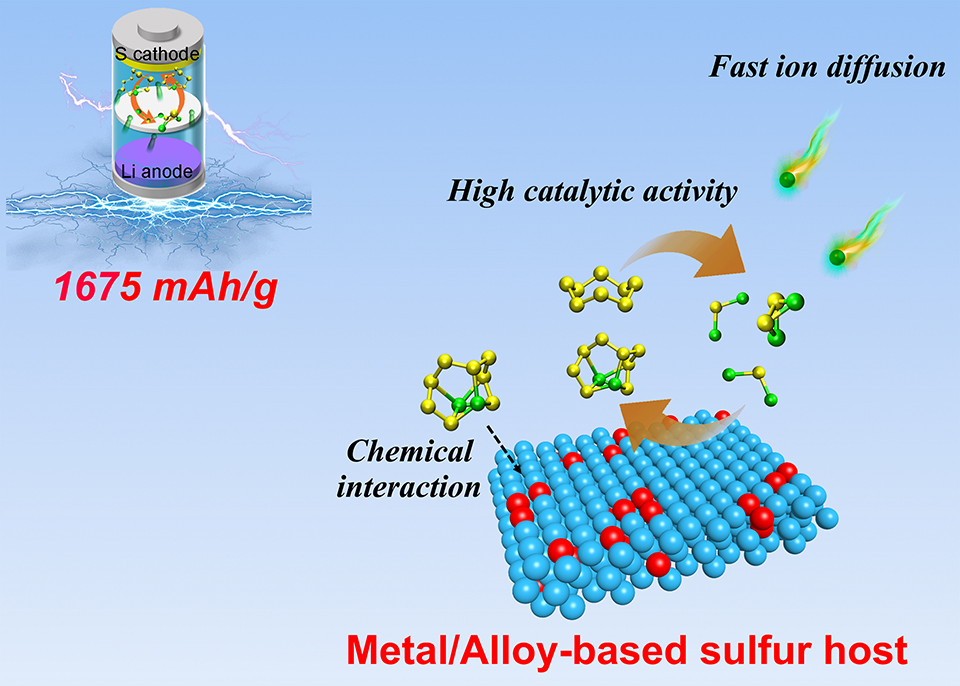

金属和合金作为锂-硫电池硫正极催化载体
收稿日期: 2022-07-12
修回日期: 2022-09-11
录用日期: 2022-10-04
网络出版日期: 2022-10-05
Metals and Alloys as Catalytic Hosts of Sulfur Cathode for Lithium-Sulfur Batteries
Received date: 2022-07-12
Revised date: 2022-09-11
Accepted date: 2022-10-04
Online published: 2022-10-05
锂-硫电池具有2600 Wh·kg-1的理论能量密度,被认为是最具发展潜力的下一代能量存储体系之一。然而,锂-硫电池的应用严重受制于单质硫和放电产物(Li2S2/Li2S)迟滞的电化学反应动力学以及可溶性多硫化锂中间体的“穿梭效应”,这些问题导致电池的循环稳定性差、硫利用率以及库仑效率低下。将催化载体引入硫正极,可加快锂-硫电池中含硫物种反应速率,进而抑制活性物质溶解流失。这篇综述简要总结了金属和合金材料作为硫正极核心催化载体的最新研究进展,同时阐明了金属及合金载体对含硫物种的催化转换机理,最后对催化载体的构筑以及高能锂-硫电池的发展进行了展望。

王振宇 , 高学平 . 金属和合金作为锂-硫电池硫正极催化载体[J]. 电化学, 2023 , 29(4) : 2217001 . DOI: 10.13208/j.electrochem.2217001
Lithium-sulfur batteries are recognized as one of the most promising next-generation energy storage devices, owing to the high theoretical energy density of 2600 Wh·kg-1. However, their application has been seriously hindered by the sluggish electrochemical reaction kinetics of elemental sulfur and discharged products (Li2S2/Li2S), and the notorious “shuttle effect” of soluble intermediate lithium polysulfide species, leading to poor cycle stability, low sulfur utilization and inferior coulombic efficiency. Introducing catalytic hosts into sulfur cathode is an efficient path to propel the conversion of sulfur-contained species, thus preventing the dissolution and loss of active-sulfur material in lithium-sulfur batteries. In this review, we summarize recent progresses on the uses of metals and alloys as the core catalytic host of sulfur, and demonstrate the catalytic mechanism in the conversion process of sulfur species with the help of metal and alloy hosts. Finally, future outlooks are proposed on the construction of catalytic hosts and the development of high-energy lithium-sulfur batteries.

Key words: Lithium-sulfur batteries; Metals/alloys; Catalytic hosts
/
| 〈 |
|
〉 |